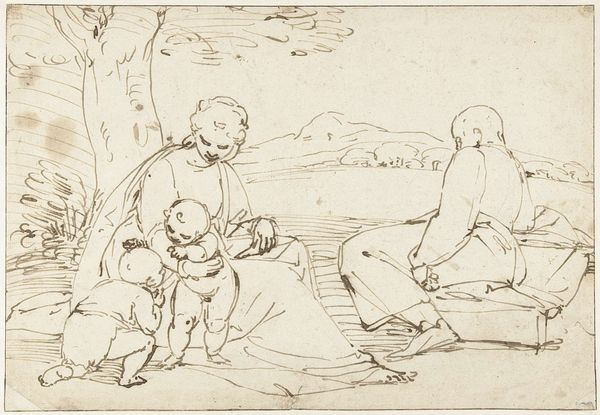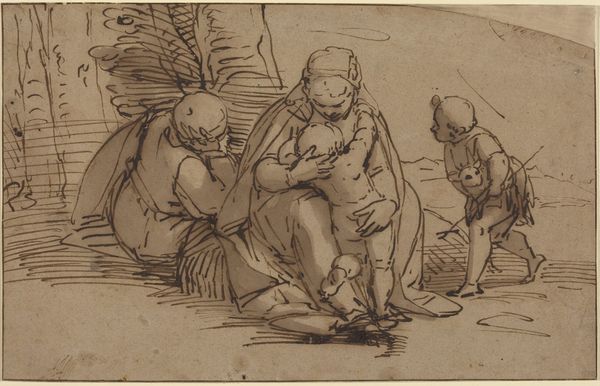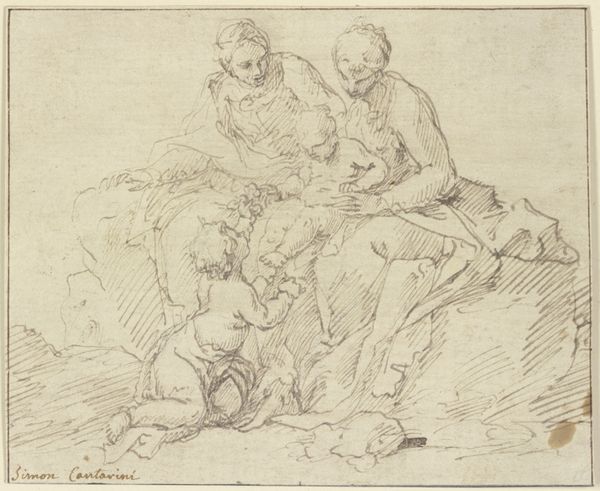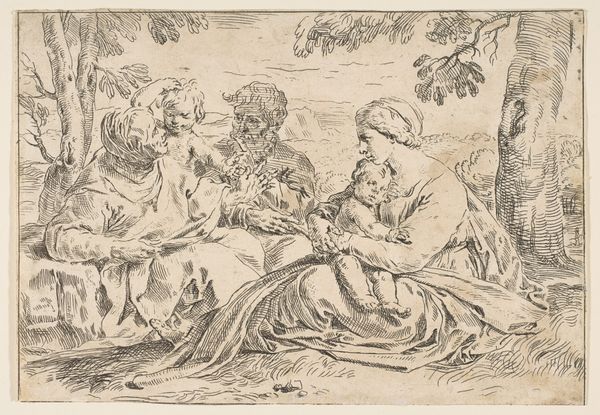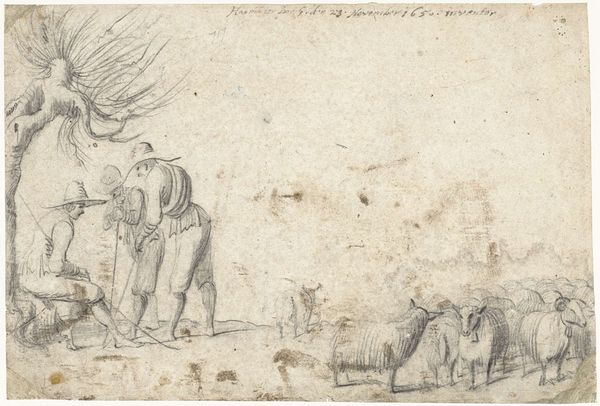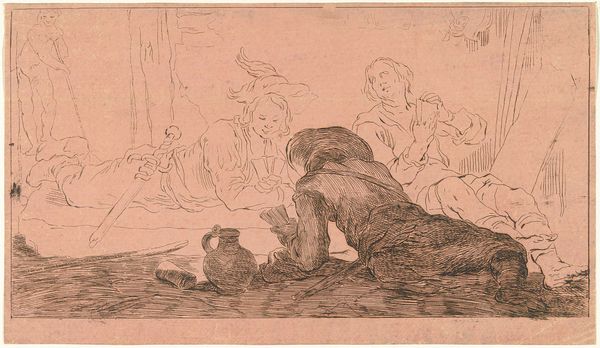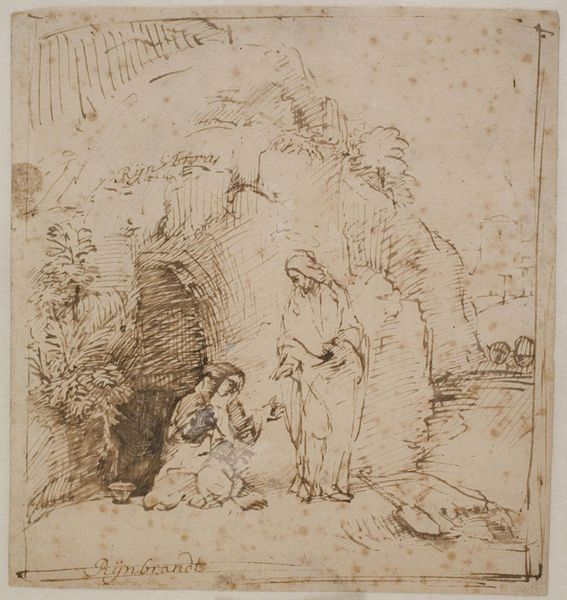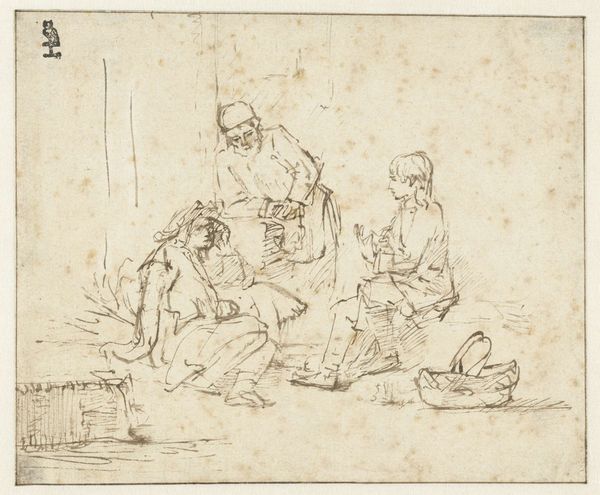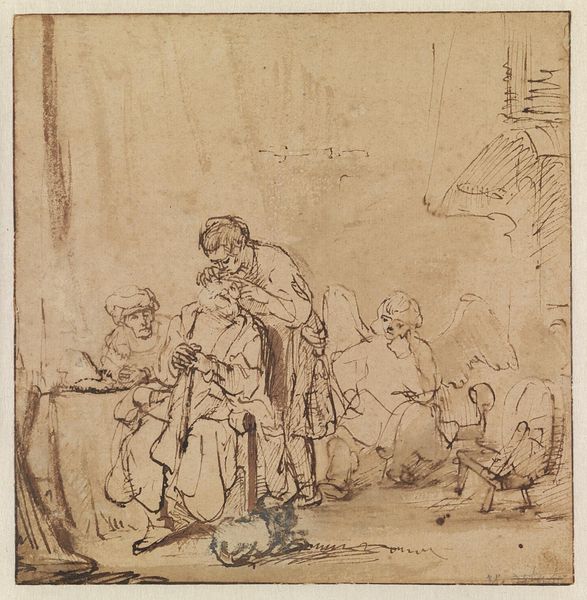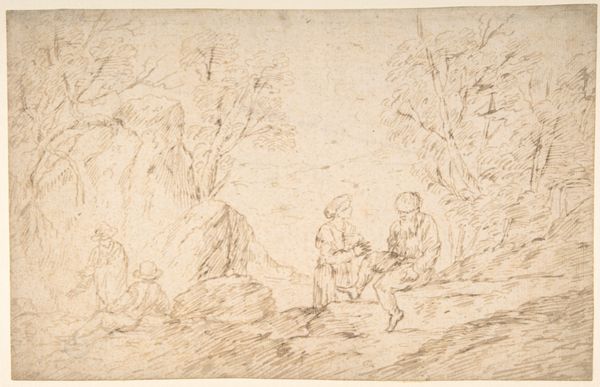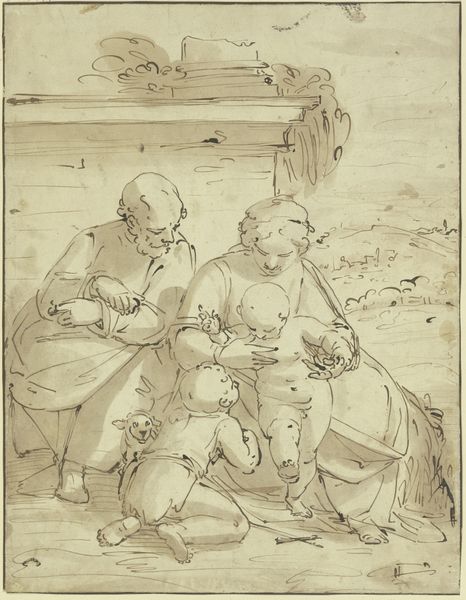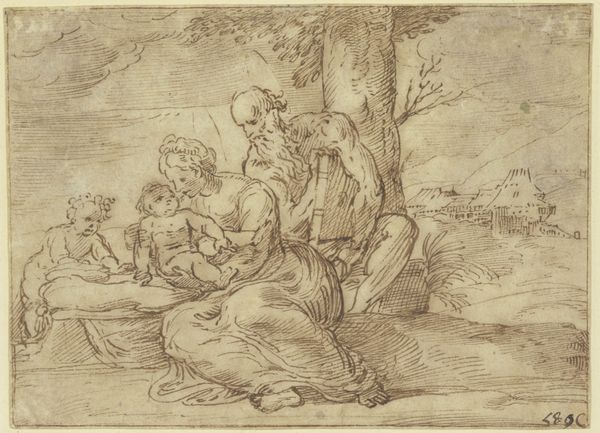
Heilige Familie met Johannes de Doper als kind in een landschap 1537 - 1585
0:00
0:00
lucacambiaso
Rijksmuseum
drawing, paper, ink
#
drawing
#
ink drawing
#
narrative-art
#
landscape
#
figuration
#
paper
#
11_renaissance
#
ink
#
italian-renaissance
Dimensions: height 216 mm, width 347 mm
Copyright: Rijks Museum: Open Domain
Editor: Here we have "Holy Family with the Infant Saint John the Baptist in a Landscape," a pen and ink drawing on paper by Luca Cambiaso, created sometime between 1537 and 1585. There’s a wonderful fluidity to the lines, it looks effortless, but I imagine that effect required tremendous skill, can you tell me what do you see when you look at this? Curator: It’s intriguing to consider the material circumstances that enabled such a drawing. The availability of paper and ink, for example, speaks to a certain level of economic development and trade networks in Cambiaso’s time. How were these materials sourced, prepared, and distributed? What labor went into the very creation of the medium he used? Editor: I hadn’t considered that. It does make you wonder about the supply chain, even then. The landscape also looks quite specific; what do you make of that element of the composition? Curator: Absolutely. That depiction of the landscape invites inquiry. Is it a real place, or an imagined one? What relationship might it have to the economic realities of land ownership and agricultural production in 16th century Italy? The consumption of landscape, even in drawing, can tell us so much about the society that produced it. Think about who was buying or commissioning such images. Editor: It’s easy to get lost in the figures and miss that. This definitely offers a richer understanding of the artwork by exploring its connection to historical conditions and manufacturing. Curator: Precisely! And don’t forget, artistic skill itself is a form of specialized labor. Understanding the training and apprenticeship system of the time helps us appreciate the social context that shaped Cambiaso’s hand and eye. Editor: I never really thought about it from the manufacturing, the making of the thing itself. Curator: Hopefully it's offered a more complex understanding about material reality and labor practices which underpin even the most seemingly ethereal works of art.
Comments
No comments
Be the first to comment and join the conversation on the ultimate creative platform.
